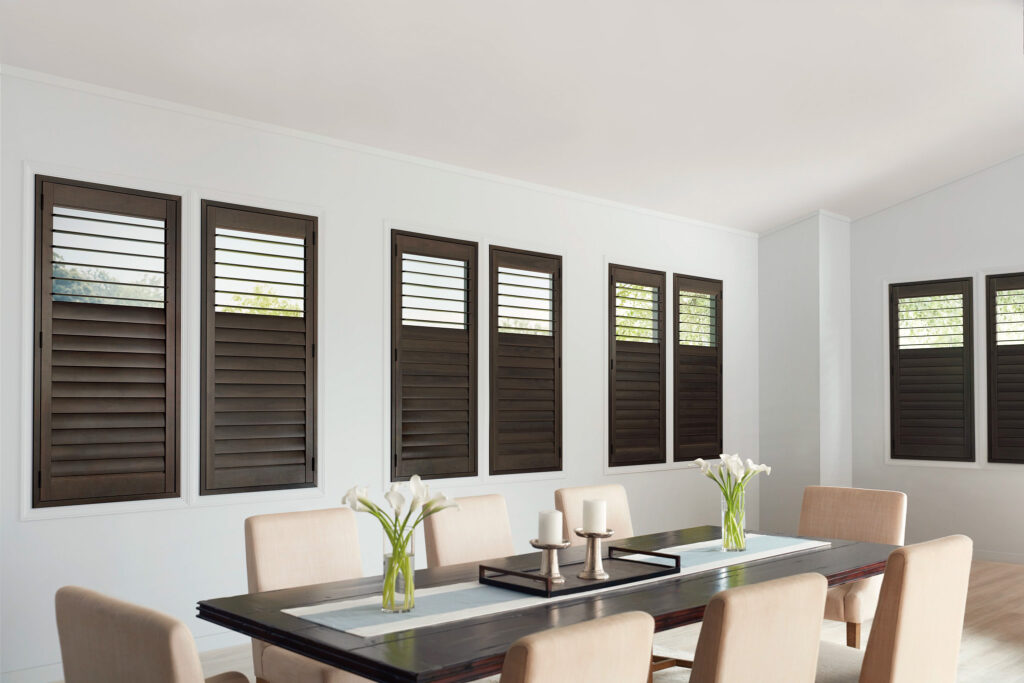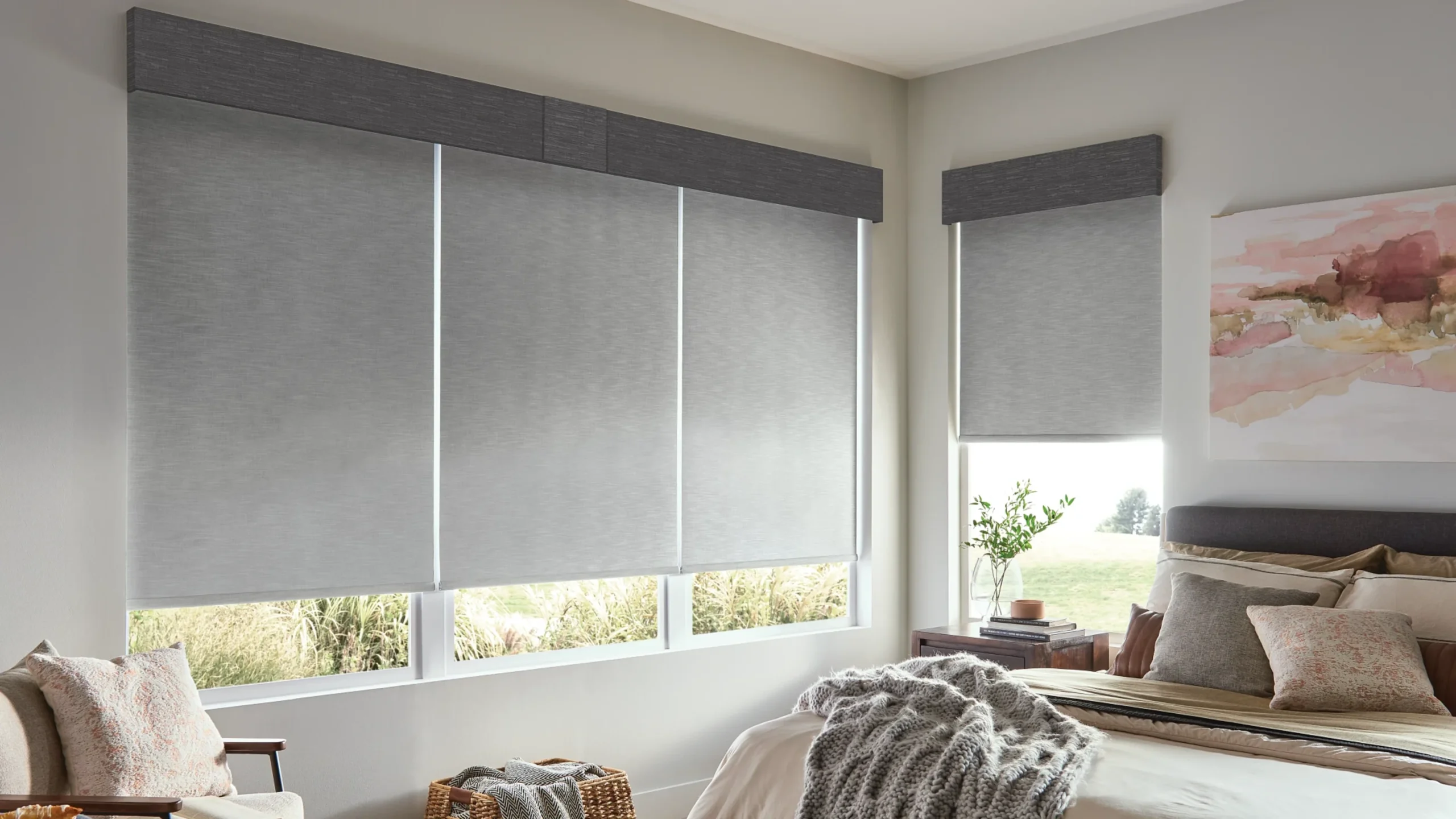While they make a beautiful statement, shutters are notorious for collecting dust. The slats extending across your windows provide the perfect perch for floating dust, detracting from the stunning looks your shutters provide. So, routine cleaning is essential to keep dust at bay and ensure your shutters remain as elegant and luxurious as ever.
The correct process to clean your shutters depends on the material they’re made with, as the best practices vary. This guide explores how to clean the most popular materials: wood and vinyl shutters.

How to Clean Shutters Made of Wood
The grains in natural wooden shutters can provide cracks and crevices for dust, pet hair, and other debris. Every week, take a microfiber cloth or feather duster and gently wipe away dirt and debris. If you have a vacuum cleaner with a hose and a soft-bristled attachment, that will work, too.
After wiping away the dust, dampen a microfiber cloth with warm water and wring it out well. Excess moisture isn’t good for wood shutters and can cause water damage on natural wood, so make sure the cloth is nearly wrung dry. The hint of moisture will help work through stubborn gunk better than a dry cloth, but without damaging the wood. Wipe each slat with a slightly damp cloth to lift dirt, fingerprints, and stains.
In some cases, you might notice gunk buildup caked at the end of each slat in the narrow space between it and the window frame. This area can be tricky to reach with a vacuum cleaner or cloth, but an old, soft-bristled toothbrush can get the job done. Use the toothbrush to brush away hard-to-reach dust and grime between the slats and the window frame or around the hinges.
Occasionally, you may need to apply furniture polish to brighten your shutters and restore them to their initial condition. Follow the furniture polish packaging directions to ensure a smooth, beautiful application.
Alternatively, if you prefer using more natural ingredients, apply a light coating of lemon oil once a month. This can help preserve the natural beauty of the wood by preventing cracks and protecting it from moisture.
How to Clean Shutters Made of Painted Wood, Faux Wood, Aluminum, or Vinyl
Cleaning painted wood, faux wood, aluminum, or vinyl shutters is different from refreshing natural wood shutters. These materials are less susceptible to water damage than natural wood, so you don’t need to be as cautious with your cleaning practices.
Like natural wood, shutters made from painted wood, faux wood, aluminum, and vinyl require regular dusting. This will help minimize dust, pet hair, and debris buildup, making the shutters easier to clean when the time for deep cleaning rolls around.
Use a feather duster, vacuum fitted with a soft-bristled attachment, or soft cloth to wipe down each slat. Once you wipe away the dust, mix a bucket of cleaning solution with one quart of water and one teaspoon of mild cleaning detergent, like dish soap.
Dampen a soft cloth in the cleaning solution and wring out excess moisture. Use the damp cloth to lift fingerprints, stains, and other stubborn debris on your shutters. Use an old toothbrush dipped in your cleaning solution to clean hard-to-reach areas and grooves in the shutters.
After wiping down the shutters with your cleaning solution, follow up with a wipe-down using a cloth dampened with fresh water. Dry the shutters with a clean, soft, lint-free microfiber cloth.
Tips for Cleaning Your Shutters
Cleaning window shutters isn’t overly entertaining, but a few tips and tricks can speed up the process and help you get a more thorough clean. Here are a few of our top tips:
- Rotate the shutters: Don’t forget about debris hiding underneath the slats. Flip them over as you wipe them down to remove dust on the sides and underside of the slats.
- Wipe inward: While wiping dust off the slats end-to-end is a logical approach to cleaning shutters, it can sweep dust into the hard-to-clean gap at the end of each slat. So, to make your job easier, wipe the dust toward the middle of the slat.
- Dust regularly: Dust buildup can make your next deep clean more complex, so do yourself a favor by dusting once weekly to remove minor buildup. This way, you won’t encounter daunting layers of dust the next time you deep clean your shutters.
- Invest in specialty tools: If the prospect of meticulously cleaning each slat sounds tedious, consider investing in a specialty tool designed to simultaneously clean both sides of several slats.
- Avoid harsh cleaners: Stick to mild detergents or warm water to clean your shutters. Harsh chemicals containing ammonia, bleach, and similar ingredients can damage your shutters, so avoid using them altogether.
- Use a stepstool: Employ a sturdy, stable stepstool for cleaning the upper parts of your shutters. Avoid using chairs, tables, or other furniture items that could rock or move underneath you.

Have Worn-Out Shutters? Vogue Window Fashion Can Help
While cleaning can work wonders for shutters enveloped in layers of dust and grime, it can’t help repair tired, damaged ones. If your shutters have seen better days and cleaning them doesn’t get the results you’re hoping for, it might be time for new shutters.
At Vogue Window Fashion, we offer a full range of beautiful luxury shutters to accommodate varying color palettes, aesthetic tastes, and needs. Contact us today with any questions you may have, or book a free consultation to speak with one of our expert team members today!


